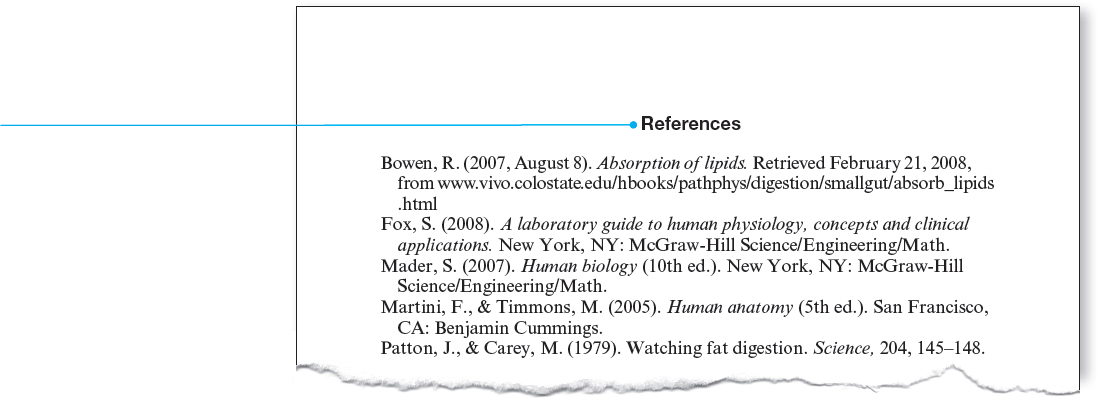Sample Lab Report
Printed Page 527-530
Sample Lab Report
The following lab report (adapted from Thomford, 2008) was written for an undergraduate human-physiology lab experiment.
Keywords in the title reflect the major focus of the lab.
The abstract concisely communicates the purpose of the lab, the approach, the results, and the significance of the findings. Some instructors require an abstract, and some do not.
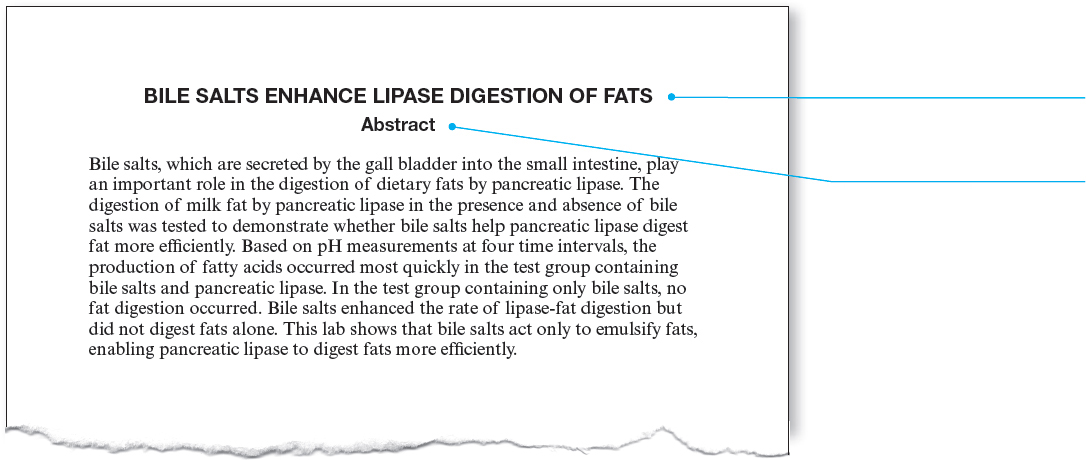
Headings reflect common elements in a lab report and help communicate the organization of the report.
Because the discussion moves from general to specific, readers are introduced to background concepts necessary to understand the rest of the report.
Statements are supported by references to research relevant to the lab.
The purpose of the lab is clearly stated.
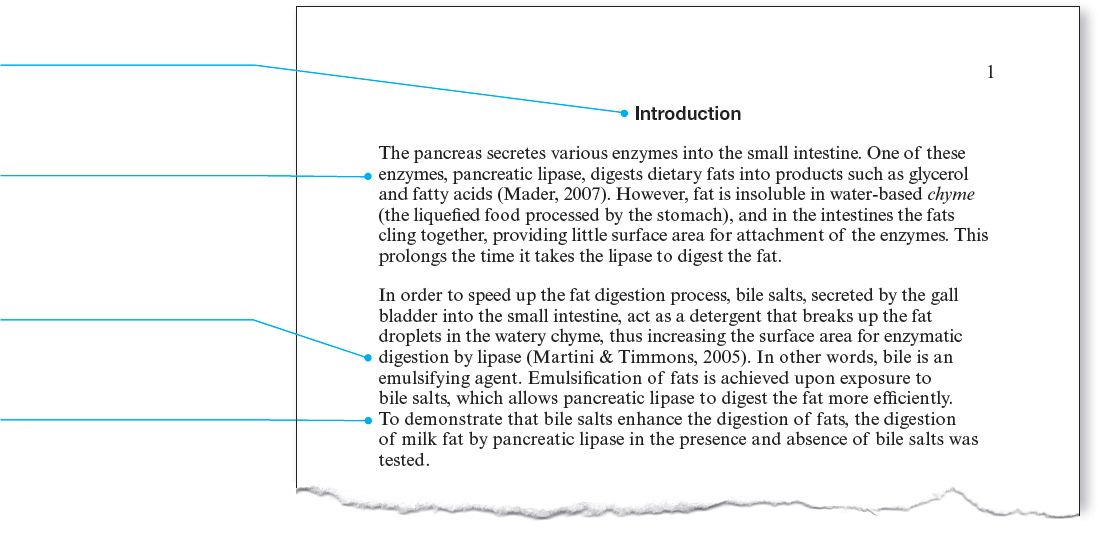
Methods are detailed enough so that another researcher could perform the same experiment using the same methods.
Methods include relevant procedures, such as the type of pH paper used, incubation temperature, and testing intervals. Note that the entire materials and methods section is written in the past tense.
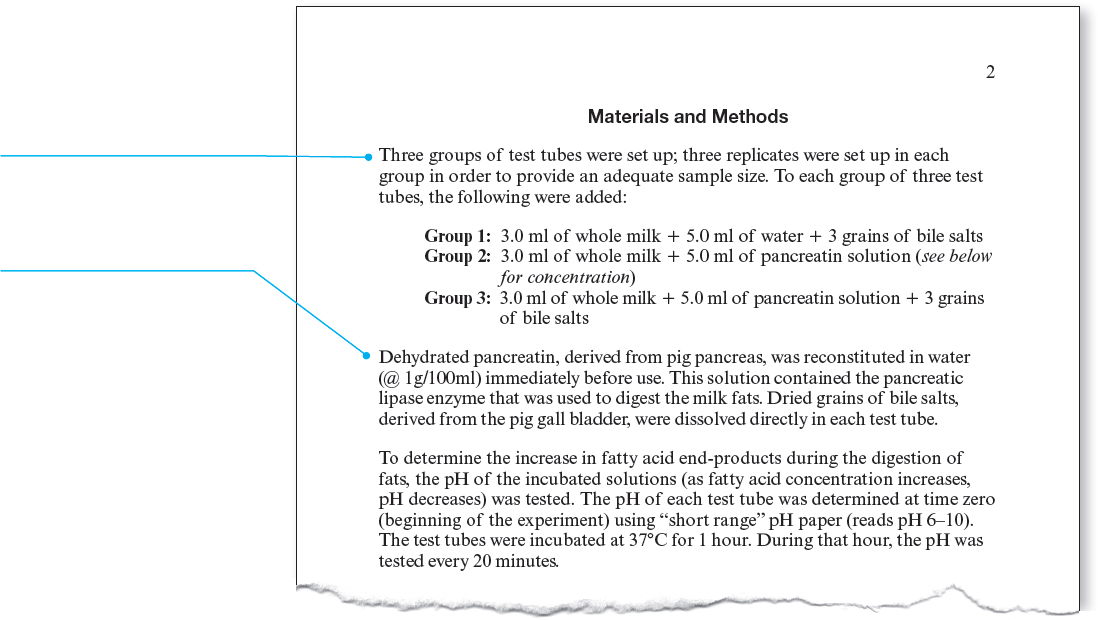
Data are presented not only in a table but also in the text. Both the table and the figure are referred to in the text. Note that the results are not interpreted in this section of the lab report.
Note that the entire results section is written in the past tense.
The table and figure are labeled with informative titles. Each graphic clearly presents a manageable amount of information.
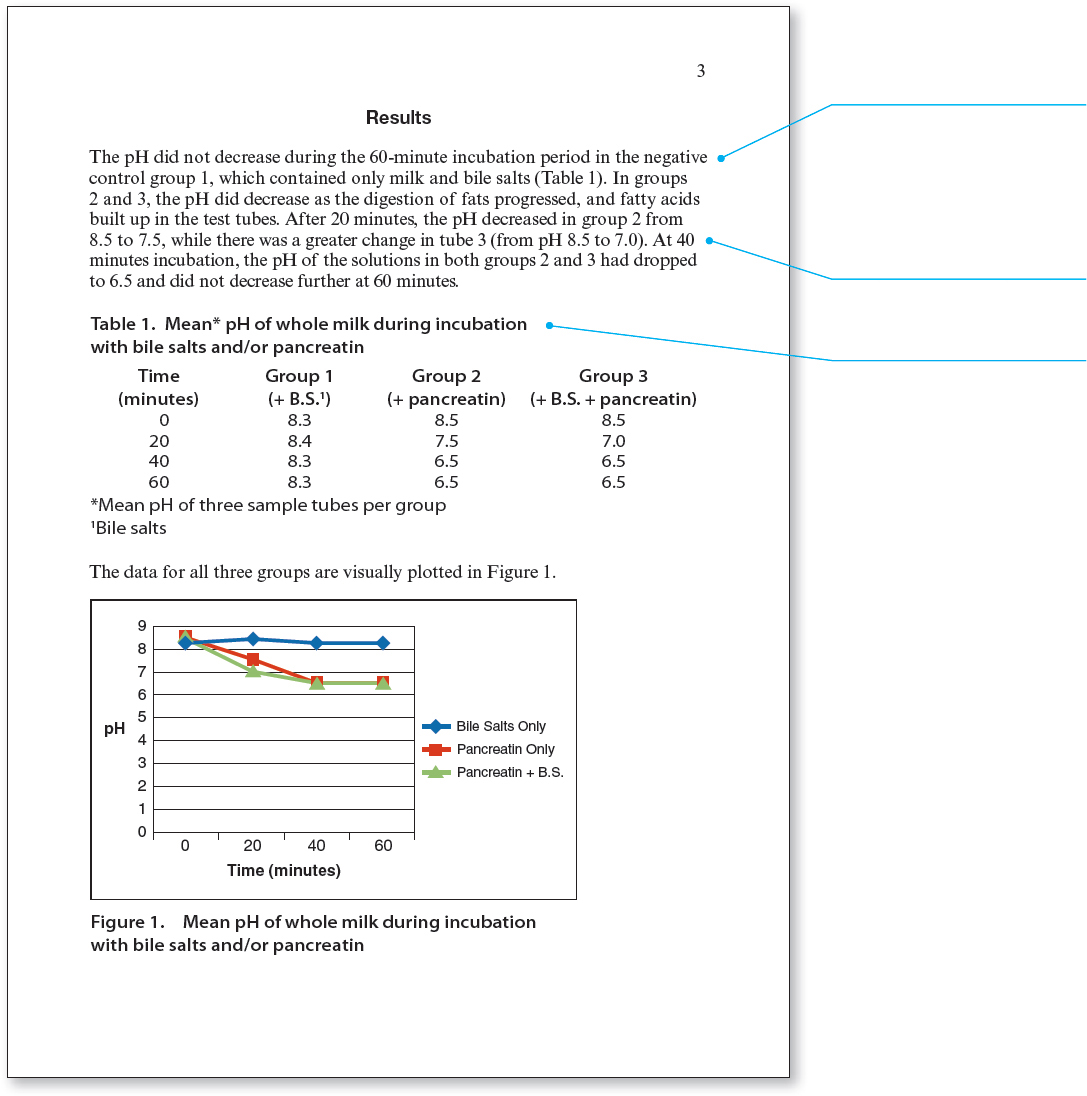
The discussion explains the purpose of the lab: to demonstrate that bile salts enhance the digestion of fats.
The discussion also explains why the experiment yielded the results that it did. Relevant research findings are referenced to support the writer’s explanations.
The final paragraph discusses the ambiguity of some of the results and suggests further experiments to address new questions raised by the current experiment.
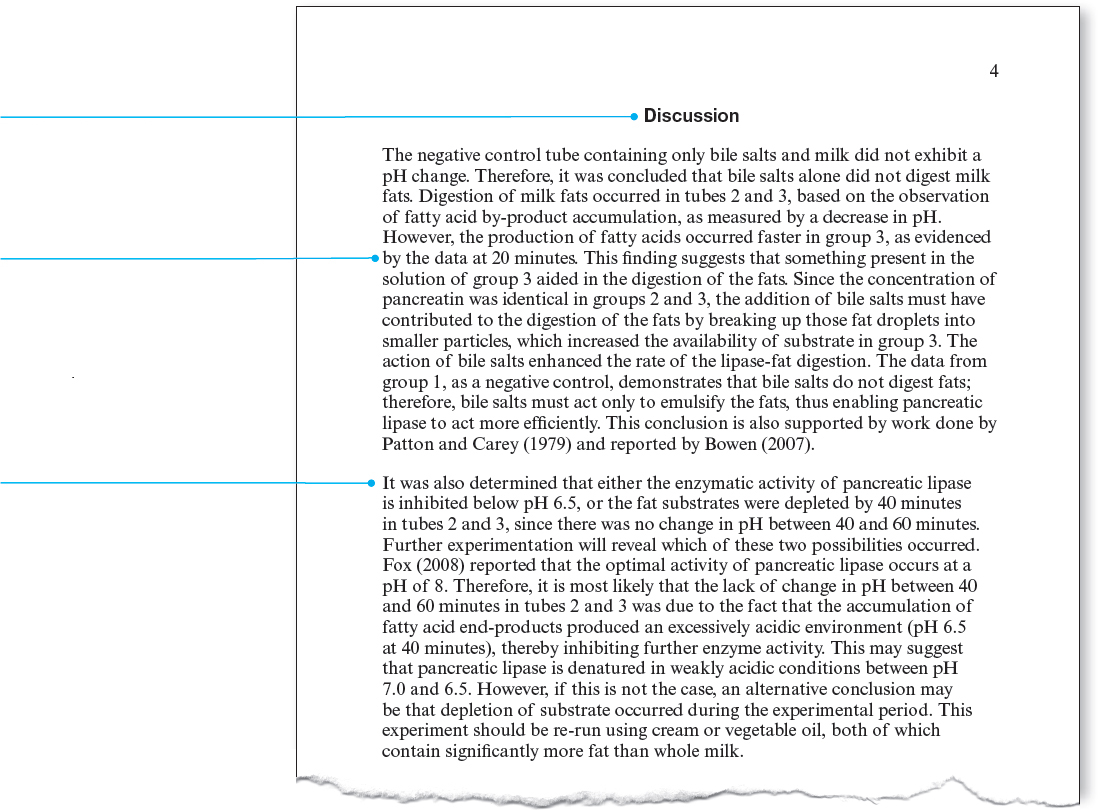
The references contain all the works cited in the body of the report. References are a mix of up-to-date sources and older but still relevant research. References follow American Psychological Association (APA) format.
